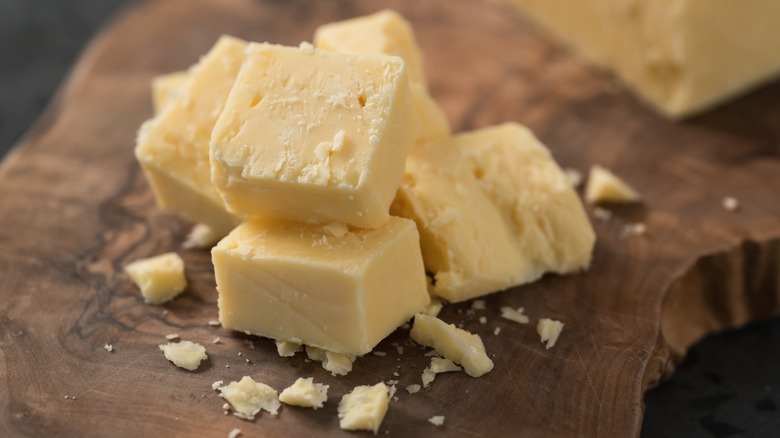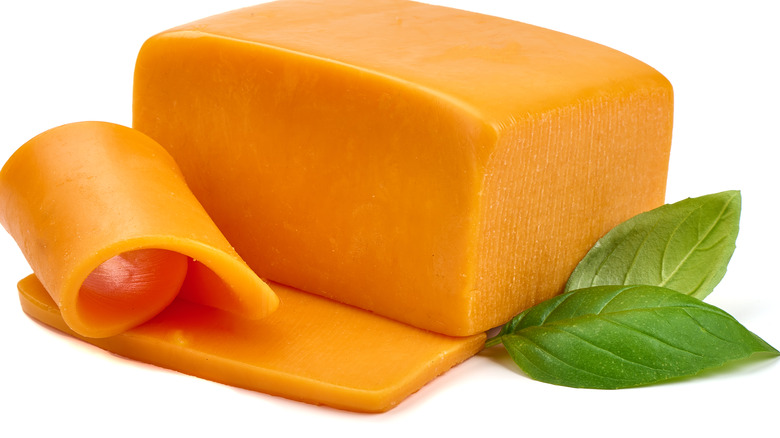Is There A Difference Between How White Cheddar And Orange Cheddar Tastes?
Canadian Living identifies cheddar as a huge category of cheeses. It yields a broad spectrum of flavors based on age, the type of milk, the cow's diet, and even the time of year. But, the most obvious difference is the color, which is generally anything from milky white to bright orange. The Dairy Farmers of Wisconsin explain that the beta-carotene-rich grass an animal eats will give the milk a yellow tint and that milk then becomes yellow cheese.
The amount of grass an animal eats fluctuates throughout the year. So, the color of cheese made from the same animal's milk will vary from month to month. Culture Magazine tells us that annatto was originally added to create a consistent color of milk throughout the year. This act was sometimes perceived as a fraudulent way to misrepresent substandard cheese. The outlet states "Many processed cheese products are known to use chemically-based coloring agents, although in recent years some companies have been trying to clean up their bad manufacturing habits by moving away from dyes like Yellow No. 5." Per Healthline, annatto is safe to eat, all-natural, and the most common way to color cheddar.
Is orange cheddar annatto flavored?
Cheesemakers use a tiny amount of natural annatto concentrate. For example, Young's Dairy uses "a few tablespoons in a 200-pound batch of cheese." Smithsonian Magazine describes annatto as a seed from the achiote plant. It's a common spice in many world cuisines that lend a nutty and peppery note to dishes. It's most often found ground into a paste (called achiote paste) as a flavoring for tacos al pastor or cochinita pibil. The amount of annatto added to color cheese isn't enough to convey those flavors though.
Cheddars made with the same milk and aged the same amount of time will taste identical, whether they're colored or not. The flavor differences are more dependent on how the cheese maker handles the milk. The microbes to turn milk into cheddar are unique to most cheesemakers and yield particular flavors. Also, the length of time they're aged has a massive impact on flavor. Young cheddars are mild and become sharper as they age. Those differences tend to be steeped in a region's traditions. America's Test Kitchen identifies cheddars in the United State's Northeast as sharp, slightly bitter, and minerally. On the West Coast, they'll be mild, sweet, and mellow.

